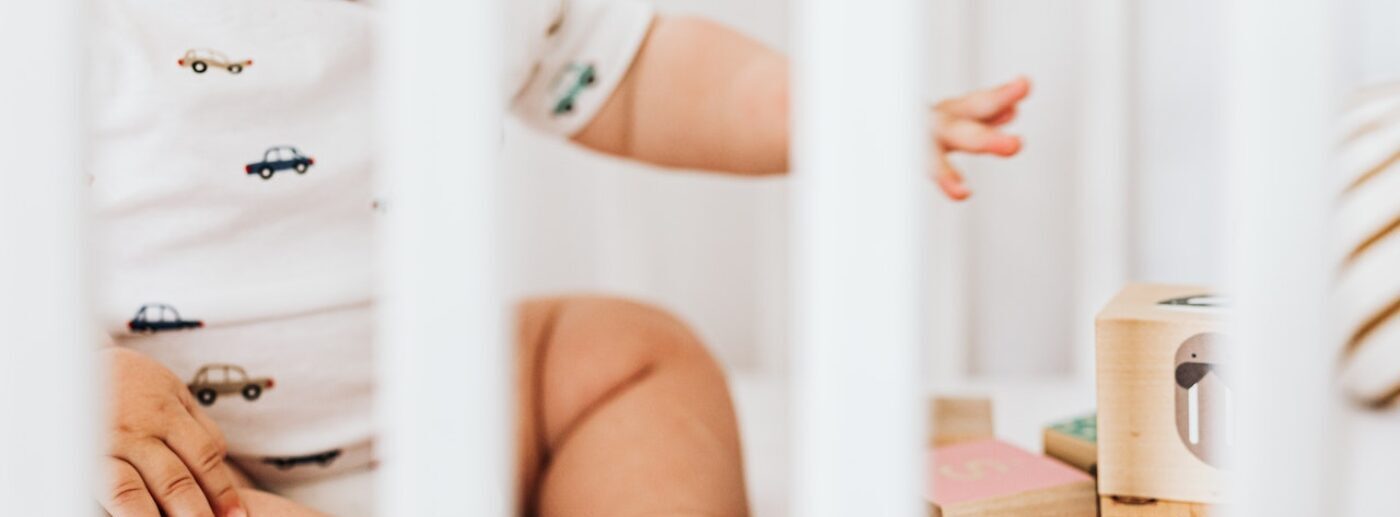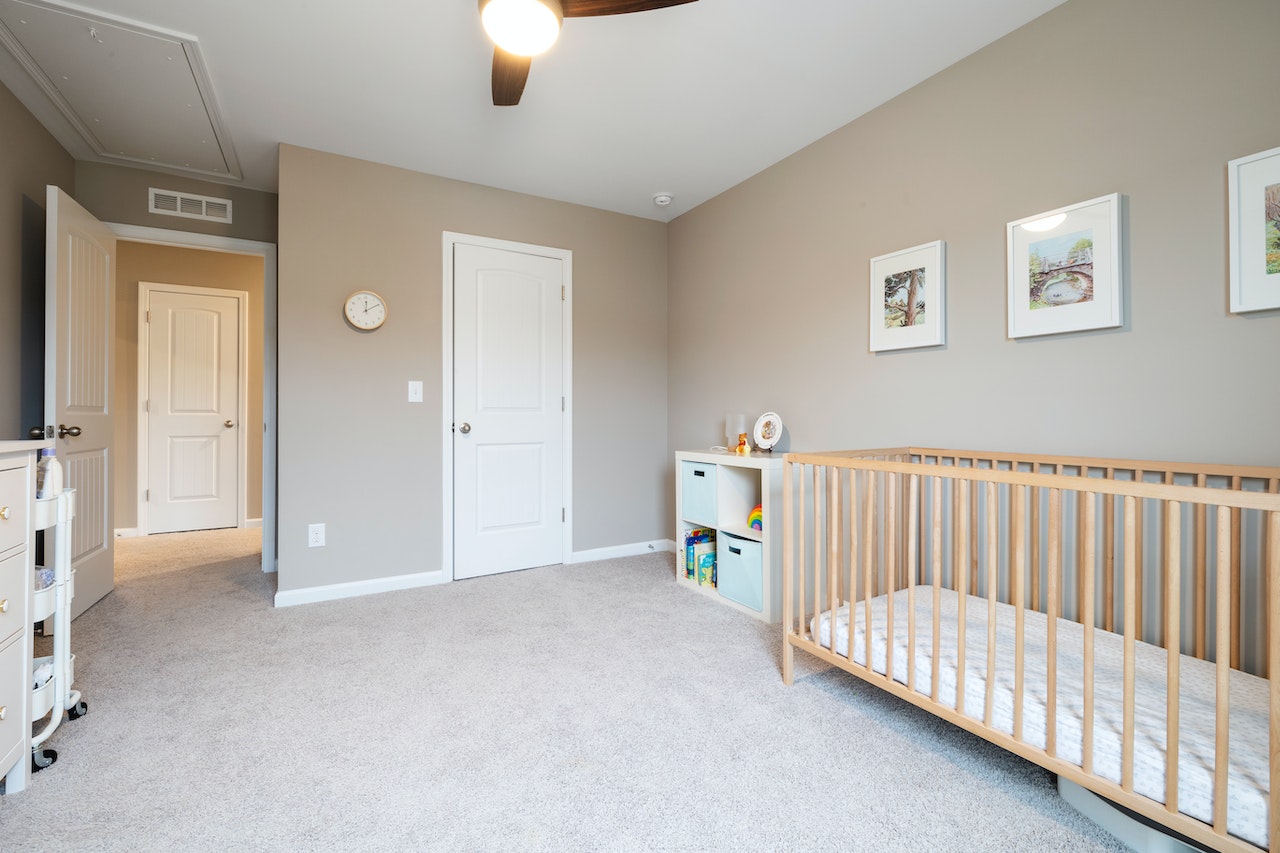If you have a small nursery, it can be challenging to create a functional and comfortable space for your baby. However, with the right design tips and tricks, you can make a small nursery feel bigger and more spacious. In this guide, we’ll explore some ways to make a small nursery feel bigger.
- Choose Light Colors:
Light colors can help make a room feel more open and spacious. Consider painting the walls a light shade of white, beige, or pastel hue to make the nursery feel bigger. You can also incorporate light-colored furniture, bedding, and accessories to create a cohesive and airy look. - Use Vertical Space:
When working with a small nursery, it’s important to make the most of the available space. Consider using vertical space, such as wall-mounted shelves or a tall bookcase, to maximize storage space and create the illusion of height. - Opt for Multi-Functional Furniture:
Multi-functional furniture can be a game-changer in a small nursery. Consider a crib with built-in storage drawers, a changing table that doubles as a dresser, or a rocking chair that also swivels. - Choose Small-Scale Furniture:
Small-scale furniture can help make a small nursery feel less cramped. Look for furniture pieces that are appropriately sized for the nursery, such as a compact changing table or a mini crib. - Keep Clutter to a Minimum:
Clutter can make a small nursery feel even smaller. Keep clutter to a minimum by using storage solutions, such as baskets, bins, and shelves, to keep items organized and out of sight. - Add Mirrors:
Mirrors can create the illusion of depth and make a small nursery feel bigger. Consider adding a full-length mirror or a mirror above the changing table to create the illusion of more space. - Use Light Layers:
Layering different textures and patterns can add depth and interest to a small nursery without overwhelming the space. Consider layering a light-colored rug on top of the flooring, adding a few decorative pillows to the rocking chair, or hanging a textured tapestry on the wall. - Choose Compact Lighting:
Lighting can also help make a small nursery feel bigger. Opt for compact lighting, such as sconces or table lamps, to save space and create a cozy and inviting atmosphere. - Emphasize the Ceiling:
Emphasizing the ceiling can draw the eye upward and create the illusion of more space. Consider adding a ceiling fan or hanging a mobile from the ceiling to create a focal point and add visual interest. - Add Personal Touches:
Personal touches can make a small nursery feel cozy and inviting. Consider adding a few framed photos or a piece of artwork that has sentimental value to you and your family.
Designing a small nursery can be a challenge, but with the right tips and tricks, you can make the most of the available space and create a functional and inviting space for your baby. By choosing light colors, using vertical space, opting for multi-functional furniture, and keeping clutter to a minimum, you can make a small nursery feel bigger and more spacious. Remember to add personal touches and emphasize the ceiling to create a cozy and inviting atmosphere for both you and your baby.

With these design tips, you can create a beautiful and functional small nursery that feels much larger than it actually is. By choosing compact and appropriately sized furniture, emphasizing vertical space, and keeping clutter to a minimum, you can maximize the space and create a comfortable environment for your baby.
Using light colors, light layers, and compact lighting can help create the illusion of more space and make the room feel brighter and more inviting. Adding personal touches, such as framed photos or artwork, can also make the space feel more personal and welcoming.
It’s important to remember that a small nursery doesn’t have to feel cramped or claustrophobic. With the right design choices and a bit of creativity, you can create a space that is functional, comfortable, and inviting for both you and your baby.
Lastly, it’s important to regularly reassess the space and make adjustments as your baby grows and their needs change. As your baby becomes more mobile, you may need to make adjustments to the furniture placement or storage solutions to keep the room safe and functional.
To summarize, the size of a nursery room depends on a variety of factors, including the size of the home, the budget, and the family’s needs. However, the American Academy of Pediatrics recommends that a nursery room be at least 70 square feet to accommodate a crib, changing table, and other necessary furniture.
In general, a nursery room should be large enough to accommodate the essential furniture and allow for comfortable movement around the room. If the nursery is too small, it may feel cramped and difficult to navigate, making it challenging to care for the baby. On the other hand, a nursery that is too large may feel empty and overwhelming, making it difficult to create a cozy and inviting atmosphere for the baby.
When determining the size of a nursery, it’s also important to consider storage solutions. Babies require a lot of equipment and supplies, and having adequate storage space is essential for keeping the nursery organized and functional.
It’s also important to consider the location of the nursery within the home. Ideally, the nursery should be located close to the parent’s bedroom to make nighttime feedings and diaper changes more convenient. However, if space is limited, the nursery may need to be located in a different part of the home. In this case, consider using a baby monitor to keep a close eye on the baby while they sleep.
Ultimately, the size of a nursery room will depend on a variety of factors. However, by considering the essential furniture, storage needs, and location within the home, parents can determine the appropriate size for their baby’s nursery.
Overall, making a small nursery feel bigger is about maximizing the space and creating a comfortable and inviting environment for your baby. By using these tips and getting creative with your design choices, you can create a beautiful and functional space that works for you and your family.

